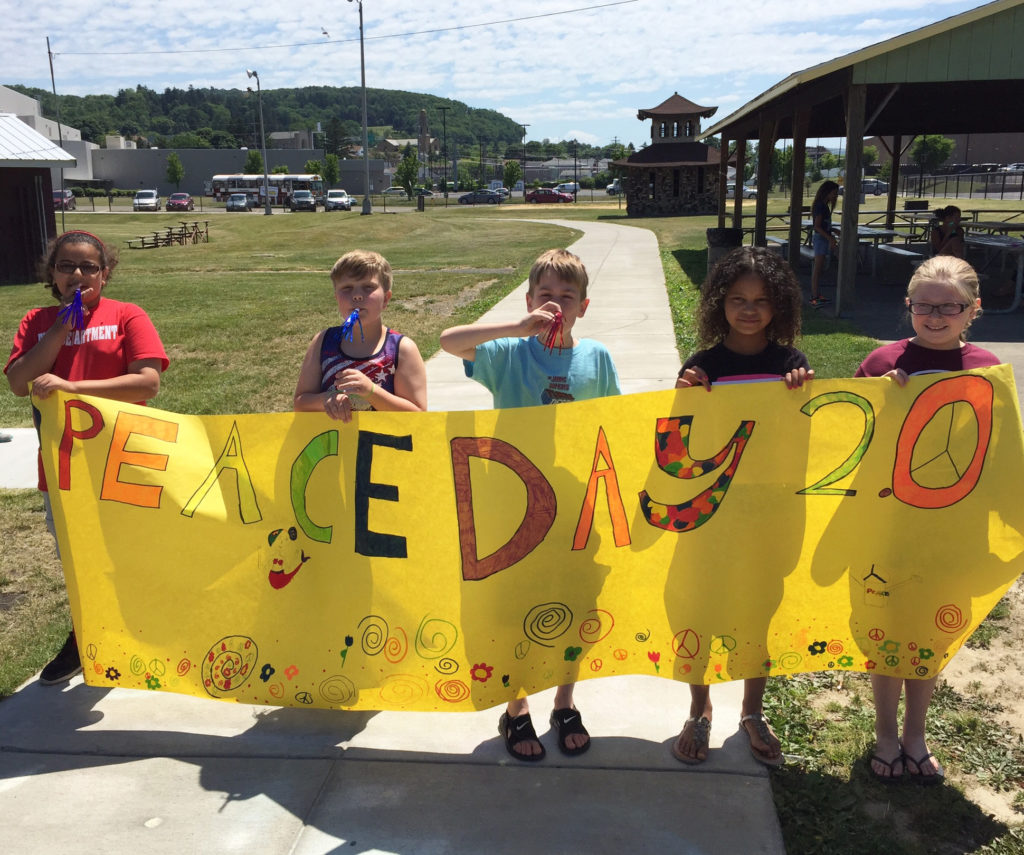Fostering Civic Engagement – using the Public Achievement Model (PA)
by Lisa Strahley and Tracy D’Arpino
What does it take for democracy to work as it should?
One might generate many responses to this question because democracy requires a dynamic array of political, social, civic, and economic practices woven together for a society to thrive. At the Douglas C. Garnar Center for Civic Engagement we believe that one of the most important practices – necessary for democracy to work as it should – is citizen engagement. Participation in civic life was built into the fabric of our country, but simply having opportunities to participate does not ensure citizen engagement. Therefore, we strive to help citizens develop civic knowledge and skills that foster a deep understanding of issues that affect our quality of life. We value principles such as open and honest dialogue so that diverse perspectives are heard and sound decisions can be made.
Our commitment to civic agency motivates us to consider how and when citizens should develop these skills. Our conclusion is that although it is never too late, early positive experiences in civic life are most beneficial. Our youth are capable and eager to develop civic agency and therefore, we discovered a way to support them. At Augsburg University, under the leadership of Dr. Harry Boyte, Public Achievement (PA) a youth civic engagement model was developed. Public Achievement brings school-aged children, guided by coaches, together to identify and address real life community issues that are relevant to them.

The civic problem-solving model follows these steps:
1. Identify an issue,
2. Explore the issue,
3. Determine what solutions are already in place,
4. Develop an action to address the issue,
5. Take action,
6. Reflect, and
7. Celebrate.
For several years our center partnered with the Johnson City School District to engage young students in this civic work. This experience was aimed at helping children develop a stronger sense of themselves as civic problems solvers and change agents in their community. One of the most important and exciting first steps was to create an atmosphere of positive relationships and fun for the children. In that way, ground rules were created to help facilitate productive conversations and respect for others. During these initiatives, the children self-selected issues that were most meaningful to their current circumstances. Various issues included: reducing school bullying, eliminating petty crime in the neighborhood, increasing recycling, autism awareness, and repairing the district’s football field that had been damaged in a flood. Using the PA model, the children explored the issues through actions such as talking to the town mayor, designing questions for school personnel, interviewing the police chief, and administering student questionnaires.
As students gained a sense of the complexity of the issues, they began to brainstorm ways that could have a positive impact. From there, they used a democratic approach to determine which solutions they would put into action. Projects included hosting a community-wide autism awareness fair, holding a walk for peace in the local town park, and organizing a family event focused on creative ways to reduce, reuse, and recycle common household items. Although we were proud of the solutions the PA teams employed, the larger reward was the civic mindset and skills these children developed. We saw students begin to ask meaningful questions, listen to their peers with interest and curiosity, and see themselves as problem solvers and change agents. The children learned that they are not merely recipients of the world around them but rather influencers.
__________
Lisa Strahley ~ Coordinator of the Civic Engagement Center, strahleyla@sunybroome.edu
Tracy D’Arpino ~ Assistant Principal Johnson City Schools, tdarpino@jcschools.stier.org